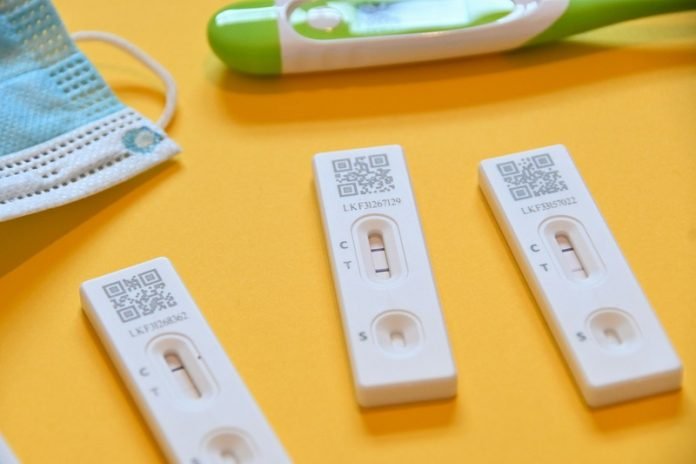
In many U.S. households, leftover COVID tests have become a common sight.
When symptoms of illness appear, questions naturally follow: When should I test? How reliable is the result? What should I do if I test positive?
Researchers at the University of Colorado Boulder have developed a new mathematical model to answer these questions quickly.
Their findings, published on June 14 in the journal Science Advances, apply not only to COVID-19 but also to emerging rapid tests for Respiratory Syncytial Virus (RSV), the flu, and other infectious diseases.
The key takeaway from their research is that the best time to take a rapid test can vary significantly depending on the disease.
“For COVID-19, we found that if you only have one test, it’s best to wait two days after symptoms appear before using it,” said Casey Middleton, a Ph.D. student and the study’s first author. “The virus is unlikely to be detectable until then. For the flu and RSV, it’s better to take the test as soon as you feel symptoms.”
The Rise of At-Home Testing
Middleton, along with senior author Daniel Larremore, a professor of computer science at the BioFrontiers Institute, developed this model to address challenges with the rapid increase in home testing post-pandemic.
Many companies now offer “all-in-one” tests that check for COVID-19, influenza A and B, and RSV at the same time. These tests are available at doctor’s offices, pharmacies, and for home use.
At-home COVID testing has become a routine practice, allowing people to self-test and make informed decisions about social activities.
“Testing before attending events, like a book club or Bingo night, is a smart move,” said Larremore. “But with COVID-19 evolving and each variant behaving differently, the interaction with tests also changes.”
When the researchers used their new model to analyze data about omicron variants, patient behavior, and other factors, they found surprising results. If a person with COVID tests immediately when symptoms appear, they might get a false negative result up to 92% of the time.
Waiting two days after symptoms start reduces this rate to 70%. Taking a second test on the third day lowers the false negative rate further, detecting about a third of infections.
This pattern occurs because people previously exposed to COVID have an immune system that reacts quickly, causing symptoms before the virus levels are high enough to detect. Additionally, new variants grow more slowly in people with some immunity.
Timing Matters for Different Viruses
In contrast, RSV and flu viruses multiply quickly, making them detectable by rapid tests as soon as symptoms appear.
This difference creates a challenge: testing immediately might detect the flu and RSV but miss COVID-19. Waiting a few days improves the chances of detecting COVID but may be too late for flu and RSV.
Even though a 66% false negative rate for COVID tests seems high, these tests are designed to identify individuals with a high viral load, who are most likely to spread the virus.
Diagnosing even one-third of infections can significantly reduce transmission by identifying the most infectious cases.
Rethinking Isolation Guidelines
The study also suggests that a “test to exit” strategy, where people test again before ending isolation, can be more effective than the standard five-day isolation policy.
This approach can prevent more infections with less inconvenience, allowing those with low virus levels to return to normal activities sooner while keeping those still infectious isolated longer.
Larremore’s earlier research helped shape the early distribution of COVID-19 vaccines and emphasized the importance of rapid testing.
He and Middleton hope their new model will improve test development, guide clinicians in advising patients, and help policymakers respond quickly in future pandemics.
“If developed and used correctly, the next generation of rapid tests could be highly impactful,” Larremore concluded.
If you care about COVID, please read studies about vitamin D deficiency linked to severe COVID-19, death, and how diets could help manage post-COVID syndrome.
For more information about health, please see recent studies about COVID infection and vaccination linked to heart disease, and results showing extracts from two wild plants can inhibit COVID-19 virus.
The research findings can be found in Science Advances.
Copyright © 2024 Knowridge Science Report. All rights reserved.



